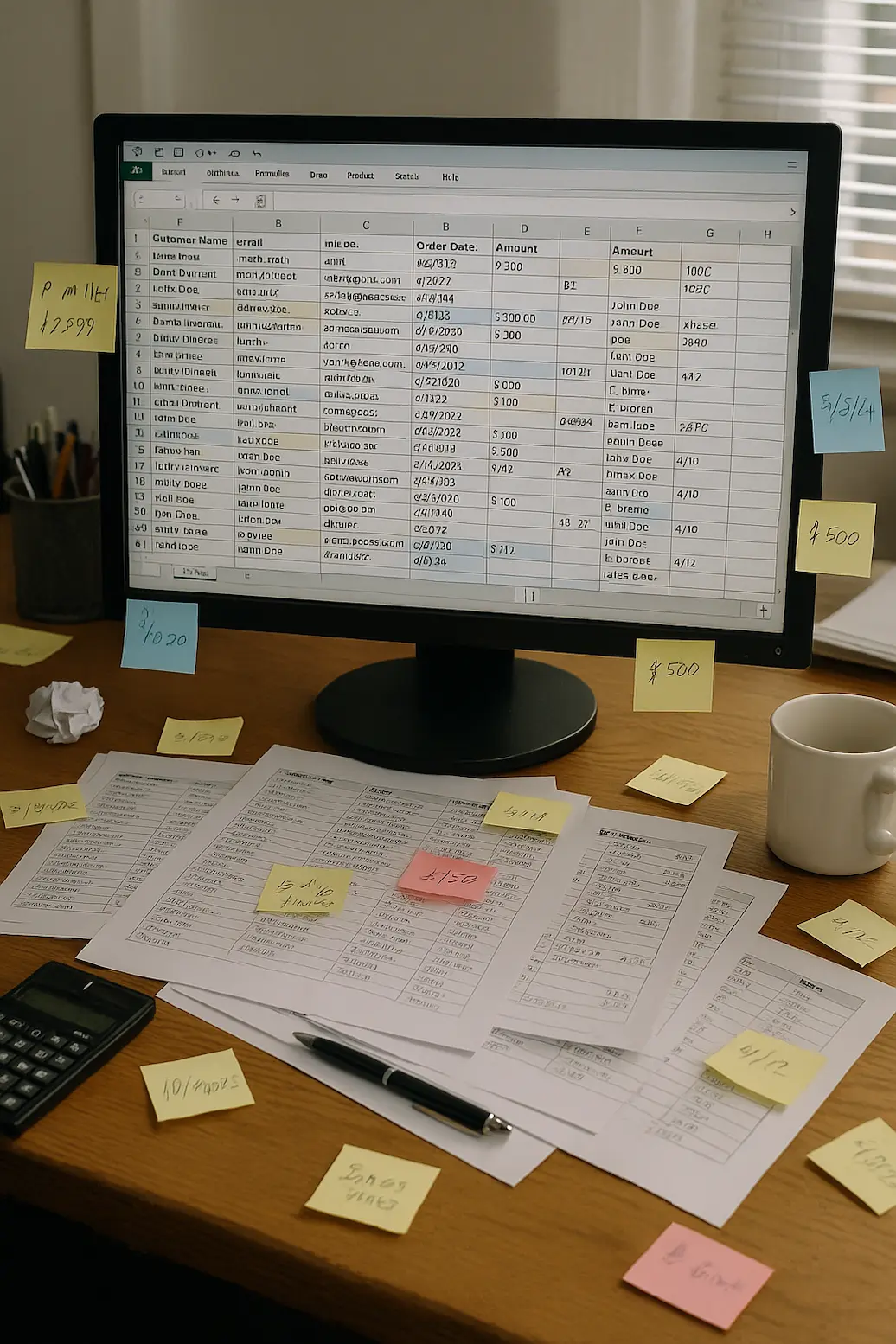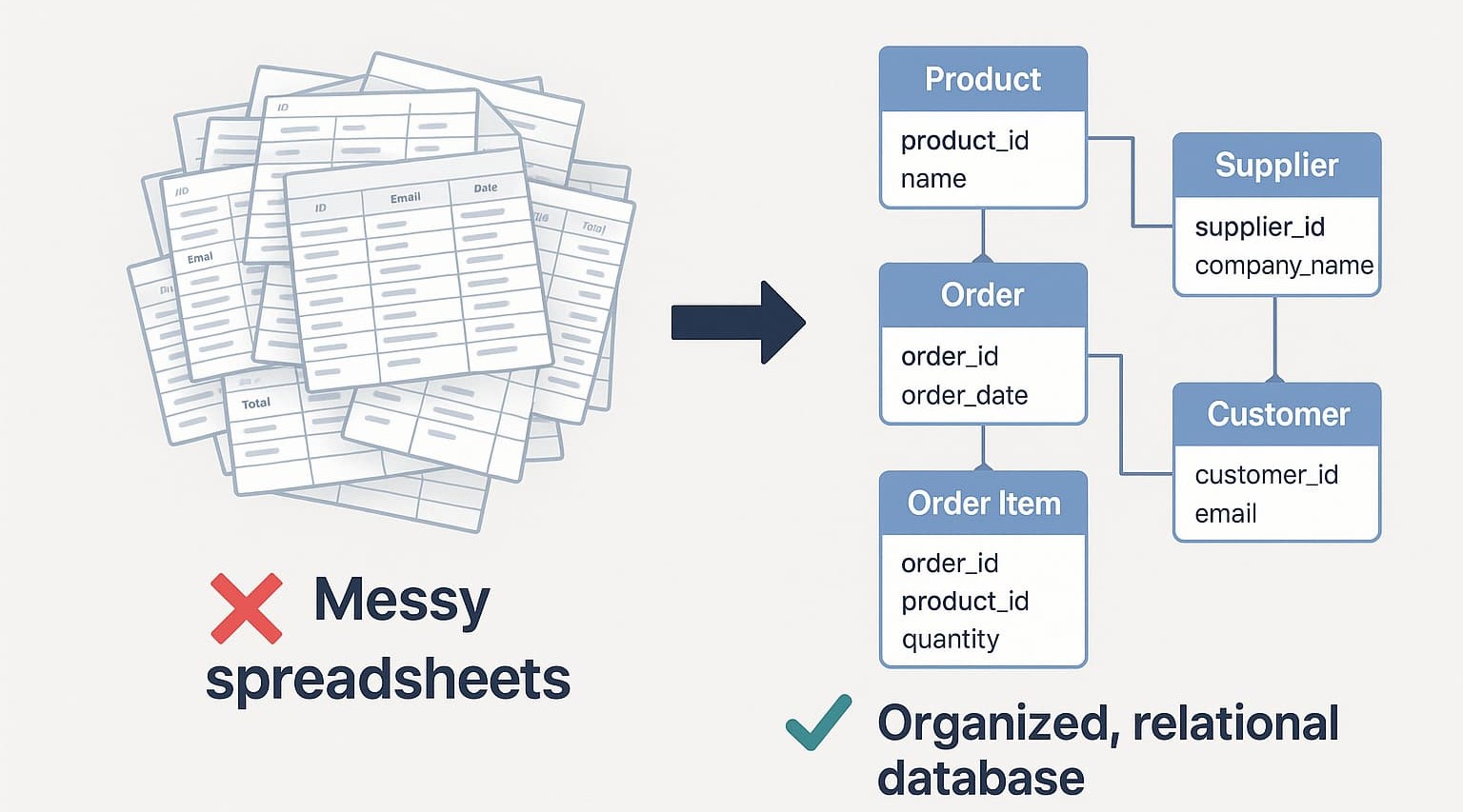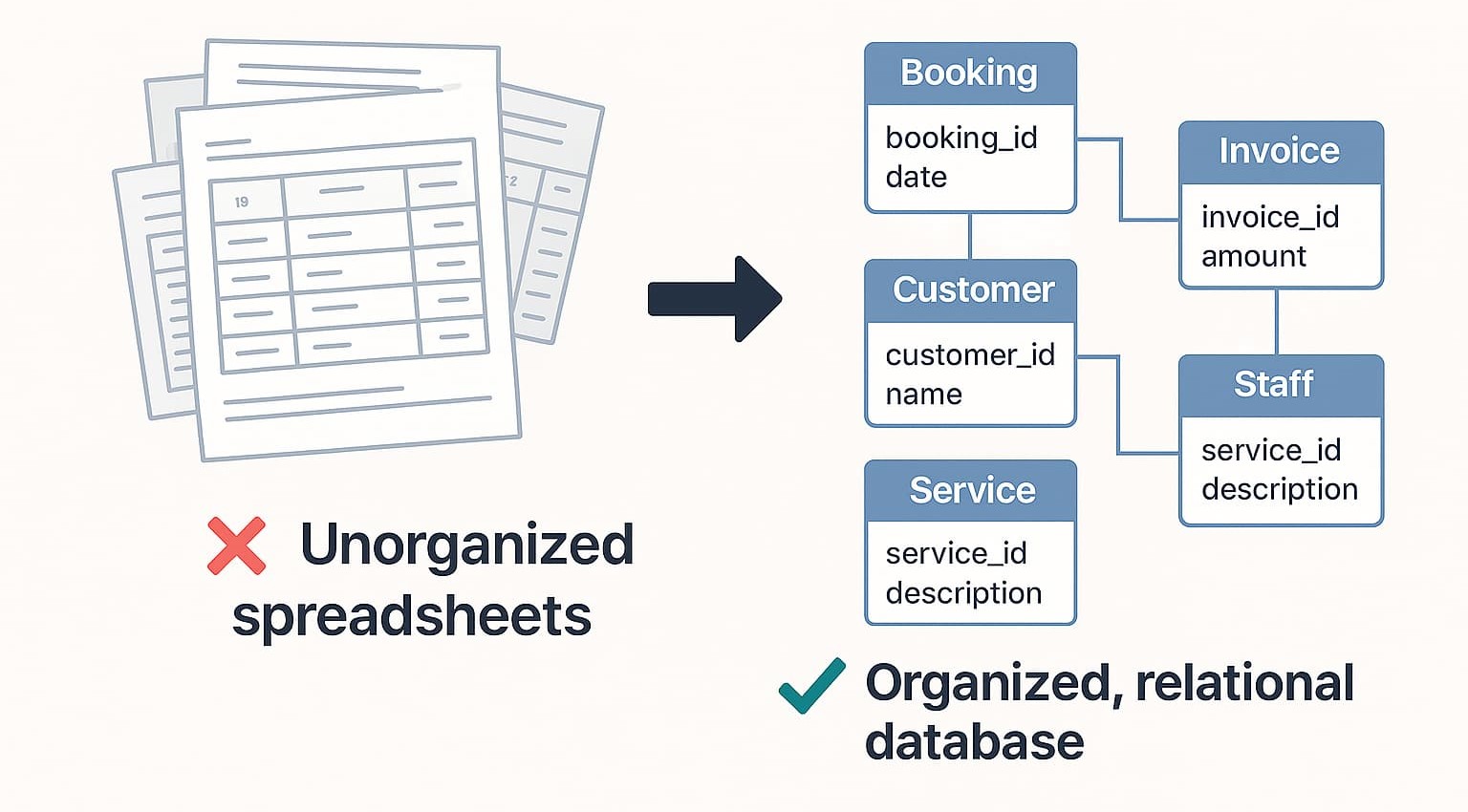Why You Need a Proper Database Structure
Whether you're running a small shop, managing client services, or tracking inventory — your data is one of your most valuable assets.
A well-designed SQL database ensures your information is organized, searchable, and scalable.
With an ERD (Entity Relationship Diagram), we map out how your data connects — customers, orders, products, employees — so we can build clean, efficient data structures behind the scenes.
Before vs. After: The Power of ERD
❌ Without ERD

- Scattered spreadsheets
- Duplicate or missing data
- No structure for growth
- Hard to build reports or dashboards
✅ With ERD & SQL

- Structured, scalable database
- Clear relationships (e.g., customers ↔ orders ↔ payments)
- Easy to build applications & dashboards
- Faster decision-making from clean data
Real-World Use Cases + Relational Schema Examples
🛒 Retail
Manage products, inventory, suppliers, and sales. See how these tables relate:

🧾 Service Business
Track customers, bookings, and invoices. A service workflow mapped with foreign keys:

👨💼 HR & Staff
Employees, departments, roles, and payroll structure in one relational diagram:

📞 CRM
Connect leads, opportunities, interactions, and accounts. See how the data flows:






